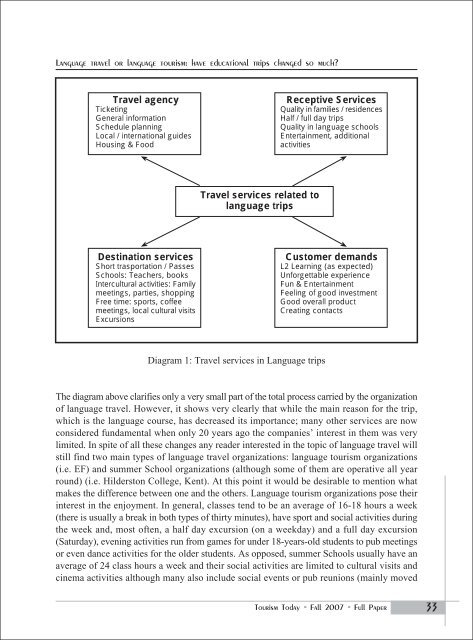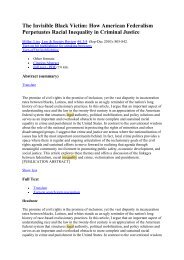Ski – resort and regional development: profile of visitors ... - E-Journal
Ski – resort and regional development: profile of visitors ... - E-Journal
Ski – resort and regional development: profile of visitors ... - E-Journal
You also want an ePaper? Increase the reach of your titles
YUMPU automatically turns print PDFs into web optimized ePapers that Google loves.
Language travel or language tourism: have educational trips changed so much?<br />
Travel agency<br />
Ticketing<br />
General information<br />
Schedule planning<br />
Local / international guides<br />
Housing & Food<br />
Destination services<br />
Short trasportation / Passes<br />
Schools: Teachers, books<br />
Intercultural activities: Family<br />
meetings, parties, shopping<br />
Free time: sports, c<strong>of</strong>fee<br />
meetings, local cultural visits<br />
Excursions<br />
Travel services related to<br />
language trips<br />
Diagram 1: Travel services in Language trips<br />
Receptive Services<br />
Quality in families / residences<br />
Half / full day trips<br />
Quality in language schools<br />
Entertainment, additional<br />
activities<br />
Customer dem<strong>and</strong>s<br />
L2 Learning (as expected)<br />
Unforgettable experience<br />
Fun & Entertainment<br />
Feeling <strong>of</strong> good investment<br />
Good overall product<br />
Creating contacts<br />
The diagram above clarifies only a very small part <strong>of</strong> the total process carried by the organization<br />
<strong>of</strong> language travel. However, it shows very clearly that while the main reason for the trip,<br />
which is the language course, has decreased its importance; many other services are now<br />
considered fundamental when only 20 years ago the companies’ interest in them was very<br />
limited. In spite <strong>of</strong> all these changes any reader interested in the topic <strong>of</strong> language travel will<br />
still find two main types <strong>of</strong> language travel organizations: language tourism organizations<br />
(i.e. EF) <strong>and</strong> summer School organizations (although some <strong>of</strong> them are operative all year<br />
round) (i.e. Hilderston College, Kent). At this point it would be desirable to mention what<br />
makes the difference between one <strong>and</strong> the others. Language tourism organizations pose their<br />
interest in the enjoyment. In general, classes tend to be an average <strong>of</strong> 16-18 hours a week<br />
(there is usually a break in both types <strong>of</strong> thirty minutes), have sport <strong>and</strong> social activities during<br />
the week <strong>and</strong>, most <strong>of</strong>ten, a half day excursion (on a weekday) <strong>and</strong> a full day excursion<br />
(Saturday), evening activities run from games for under 18-years-old students to pub meetings<br />
or even dance activities for the older students. As opposed, summer Schools usually have an<br />
average <strong>of</strong> 24 class hours a week <strong>and</strong> their social activities are limited to cultural visits <strong>and</strong><br />
cinema activities although many also include social events or pub reunions (mainly moved<br />
Tourism Today - Fall 2007 - Full Paper<br />
33














